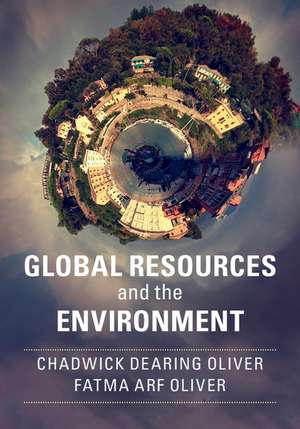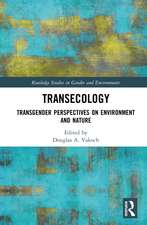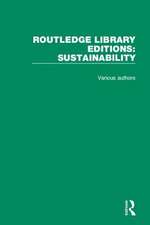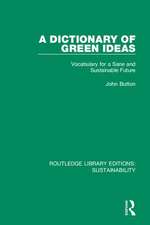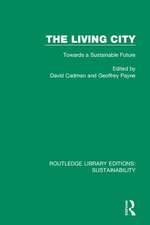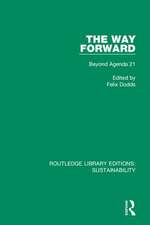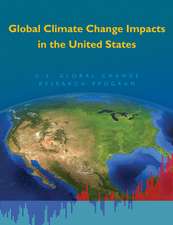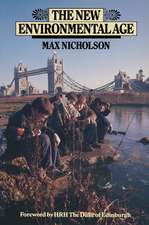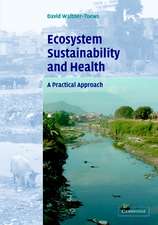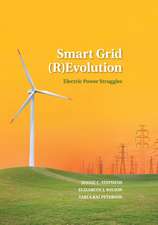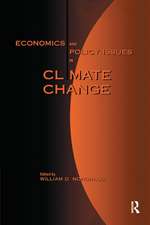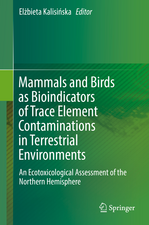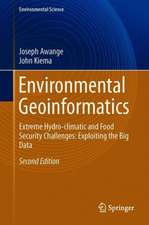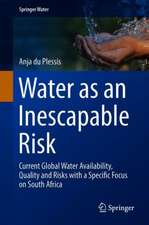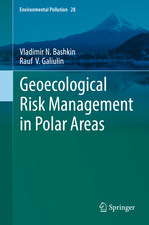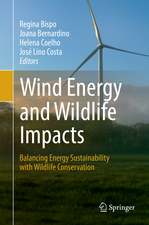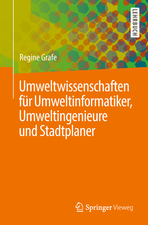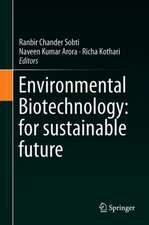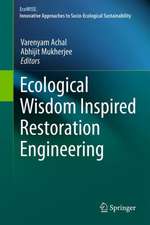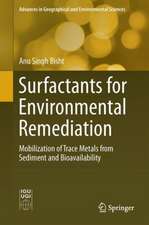Global Resources and the Environment
Autor Chadwick Dearing Oliver, Fatma Arf Oliveren Limba Engleză Paperback – 20 iun 2018
| Toate formatele și edițiile | Preț | Express |
|---|---|---|
| Paperback (1) | 470.65 lei 6-8 săpt. | |
| Cambridge University Press – 20 iun 2018 | 470.65 lei 6-8 săpt. | |
| Hardback (1) | 993.48 lei 6-8 săpt. | |
| Cambridge University Press – 20 iun 2018 | 993.48 lei 6-8 săpt. |
Preț: 470.65 lei
Preț vechi: 528.82 lei
-11% Nou
Puncte Express: 706
Preț estimativ în valută:
90.07€ • 93.69$ • 74.36£
90.07€ • 93.69$ • 74.36£
Carte tipărită la comandă
Livrare economică 14-28 aprilie
Preluare comenzi: 021 569.72.76
Specificații
ISBN-13: 9781316625415
ISBN-10: 1316625419
Pagini: 536
Ilustrații: 209 b/w illus. 13 colour illus. 24 maps 31 tables
Dimensiuni: 175 x 247 x 27 mm
Greutate: 1.11 kg
Editura: Cambridge University Press
Colecția Cambridge University Press
Locul publicării:Cambridge, United Kingdom
ISBN-10: 1316625419
Pagini: 536
Ilustrații: 209 b/w illus. 13 colour illus. 24 maps 31 tables
Dimensiuni: 175 x 247 x 27 mm
Greutate: 1.11 kg
Editura: Cambridge University Press
Colecția Cambridge University Press
Locul publicării:Cambridge, United Kingdom
Cuprins
Preface; Part I. Introduction, Dynamic Systems, and Change: 1. Socio-environmental systems; 2. A perspective on dynamic systems; 3. Change, sustainability, and resilience; Part II. People: 4. Where people live, communicate, and interact; 5. People, societies, populations, and changes; 6. Resources, governments, and other social influences; Part III. Climates: 7. Global distribution of climates; 8. Greenhouse gases, atmosphere, and climates; 9. Past and future climate changes; Part IV. Landforms: 10. Landforms and soils; 11. Bedrock landforms; 12. Landforms of transported materials; Part V. Biodiversity: 13. Biodiversity: individual species; 14. Biodiversity: communities and landscapes; 15. Robust and threatened species, communities; 16. Managing biodiversity; Part VI. Water: 17. The hydrologic cycle; 18. The annual hydrograph and water use; 19. Managing and mitigating the hydrologic system; Part VII. Agriculture: 20. Food groups and nutrition; 21. Agriculture and the green revolution; 22. Future agriculture production and distribution; Part VIII. Energy: 23. Energy sources, the energy cycle, exergy; 24. Conserving energy and renewable energy; 25. Future energy: reducing fossil fuel use; Part IX. Minerals: 26. Rocks and mineral properties, mining; 27. Rocks and minerals: production, use, and distribution; Part X. Forests: 28. Forests, ecosystem services, and timber; 29. Forest distribution, area, and volume changes; 30. Silviculture, forest degradation, and landscape management; Part XI. Perspective: 31. Integrating the environment, resources, and people; Appendix I. Country groups used in analyses; Appendix II. Elements, chemical symbols, atomic numbers, and masses; Index.
Recenzii
'Since the United Nations Conference on Environment and Development in Rio during 1992, international agencies, national governments, non-governmental organizations, academic institutions, the media, and the public have recognized the significance of the interactions between social, environmental, and economic needs and problems. Considerable research, development, and application have emerged but interdisciplinary approaches to problems have often been lacking. This book provides a comprehensive and integrative approach to the dynamics of natural resources, the concept of sustainability, the needs and impacts of humans, and the roles of climate and biodiversity. This substantial tome is a major contribution to broader understanding and cooperation, written by outstanding authors, and will be a fundamental resource for policy-makers, managers, and academics for many years.' Jeff Burley, Oxford Forestry Institute
'In a world with increasing specialization and more well-articulated interest-groups than ever, the Olivers' book provides the opposite of the mainstream and fragmented flows of news and information. An overview and key figures describing the main components of our global production and consumption of resources are presented, analyzed, and conclusions are drawn - not only to describe problems and challenges, but mainly to illuminate potentials and possible solutions to support a highly needed sustainable development of our world society and its expected 9 billion people by 2050. Suggestions for the reader: read it, learn from it, expand your knowledge, and continue to upgrade analytical skills using this important book as your solid platform.' Palle Madsen, Forest and Landscape College, IGN, University of Copenhagen
'Chadwick and Fatma Oliver have written a magisterial work - fact-filled, comprehensive, and illuminating. I am in admiration of their accomplishment. There is nothing else like it, and it will fill a real need.' James Gustave Speth, founder and former President of World Resources Institute, and former Dean of Yale School of Forestry and Environmental Sciences
'Global Resources and the Environment is a labor of love and a wonderful achievement. It spans widely across the natural and the social sciences, as well as economics, synthesizing a huge amount of relevant literature for scientists, policymakers, and the general reader. It is also admirably positive, while clear-sighted, in its future predictions: there are still enough resources in the world, provided they are equitably distributed and managed with greater reverence and care. A wholly recommended tour de force.' Edward Davey, Project Director, World Resources Institute
'This book is an extremely helpful and timely contribution for the current or would-be professional at the international scale. It provides thorough information on the world and by region, and presents it using smart, easy-to-understand figures and graphs that synthesize a broad spectrum of knowledge. Using copious data analysis, this work carefully balances current theories and empirical lessons to propose doable actions and a promising future, but not without paying attention to dead ends and misconceptions.' Gerardo Segura, Senior Natural Resources Management Specialist, World Bank
'In a world with increasing specialization and more well-articulated interest-groups than ever, the Olivers' book provides the opposite of the mainstream and fragmented flows of news and information. An overview and key figures describing the main components of our global production and consumption of resources are presented, analyzed, and conclusions are drawn - not only to describe problems and challenges, but mainly to illuminate potentials and possible solutions to support a highly needed sustainable development of our world society and its expected 9 billion people by 2050. Suggestions for the reader: read it, learn from it, expand your knowledge, and continue to upgrade analytical skills using this important book as your solid platform.' Palle Madsen, Forest and Landscape College, IGN, University of Copenhagen
'Chadwick and Fatma Oliver have written a magisterial work - fact-filled, comprehensive, and illuminating. I am in admiration of their accomplishment. There is nothing else like it, and it will fill a real need.' James Gustave Speth, founder and former President of World Resources Institute, and former Dean of Yale School of Forestry and Environmental Sciences
'Global Resources and the Environment is a labor of love and a wonderful achievement. It spans widely across the natural and the social sciences, as well as economics, synthesizing a huge amount of relevant literature for scientists, policymakers, and the general reader. It is also admirably positive, while clear-sighted, in its future predictions: there are still enough resources in the world, provided they are equitably distributed and managed with greater reverence and care. A wholly recommended tour de force.' Edward Davey, Project Director, World Resources Institute
'This book is an extremely helpful and timely contribution for the current or would-be professional at the international scale. It provides thorough information on the world and by region, and presents it using smart, easy-to-understand figures and graphs that synthesize a broad spectrum of knowledge. Using copious data analysis, this work carefully balances current theories and empirical lessons to propose doable actions and a promising future, but not without paying attention to dead ends and misconceptions.' Gerardo Segura, Senior Natural Resources Management Specialist, World Bank
Notă biografică
Descriere
An illustrated overview of the sustainability of natural resources and the social and environmental issues surrounding their distribution and demand.
